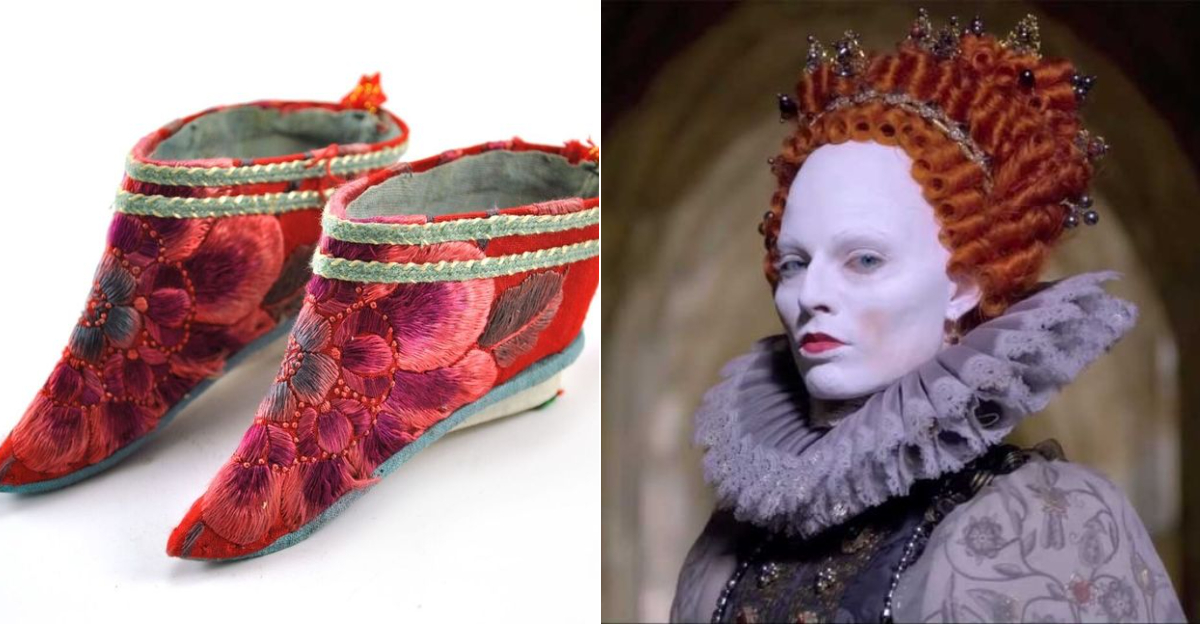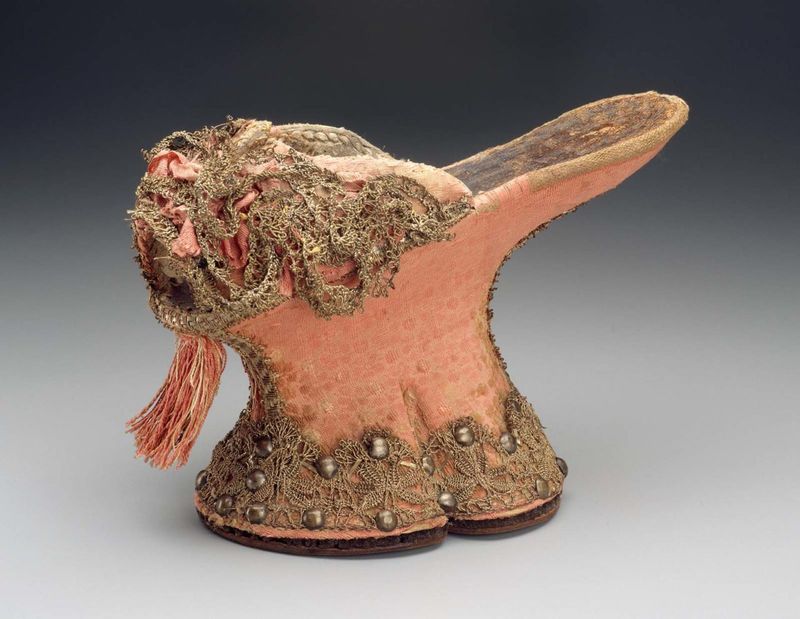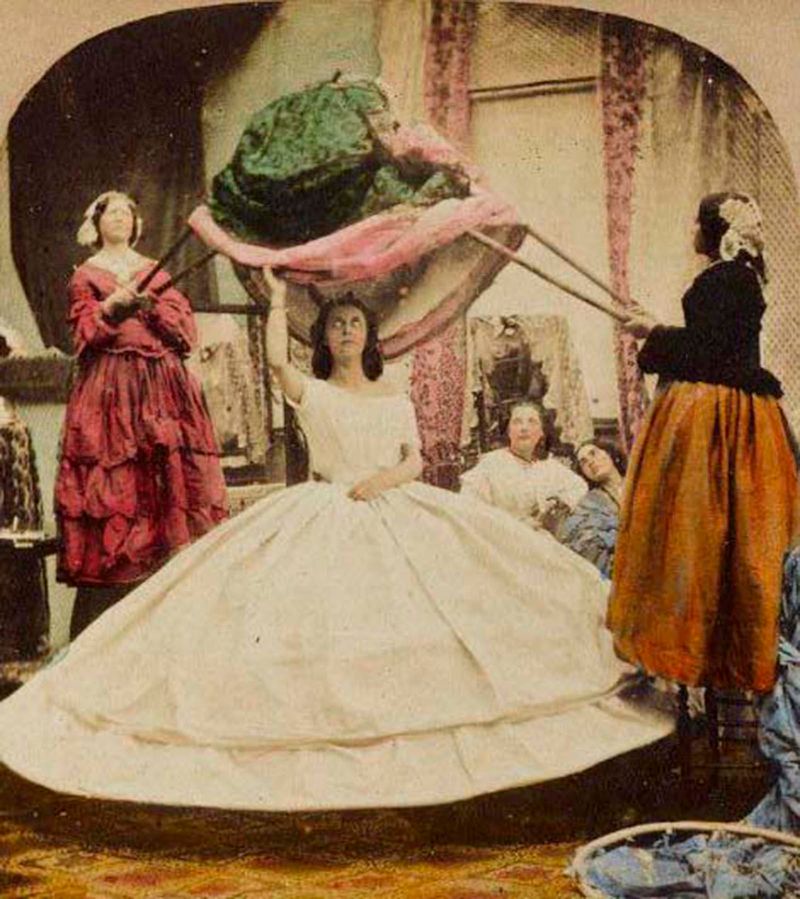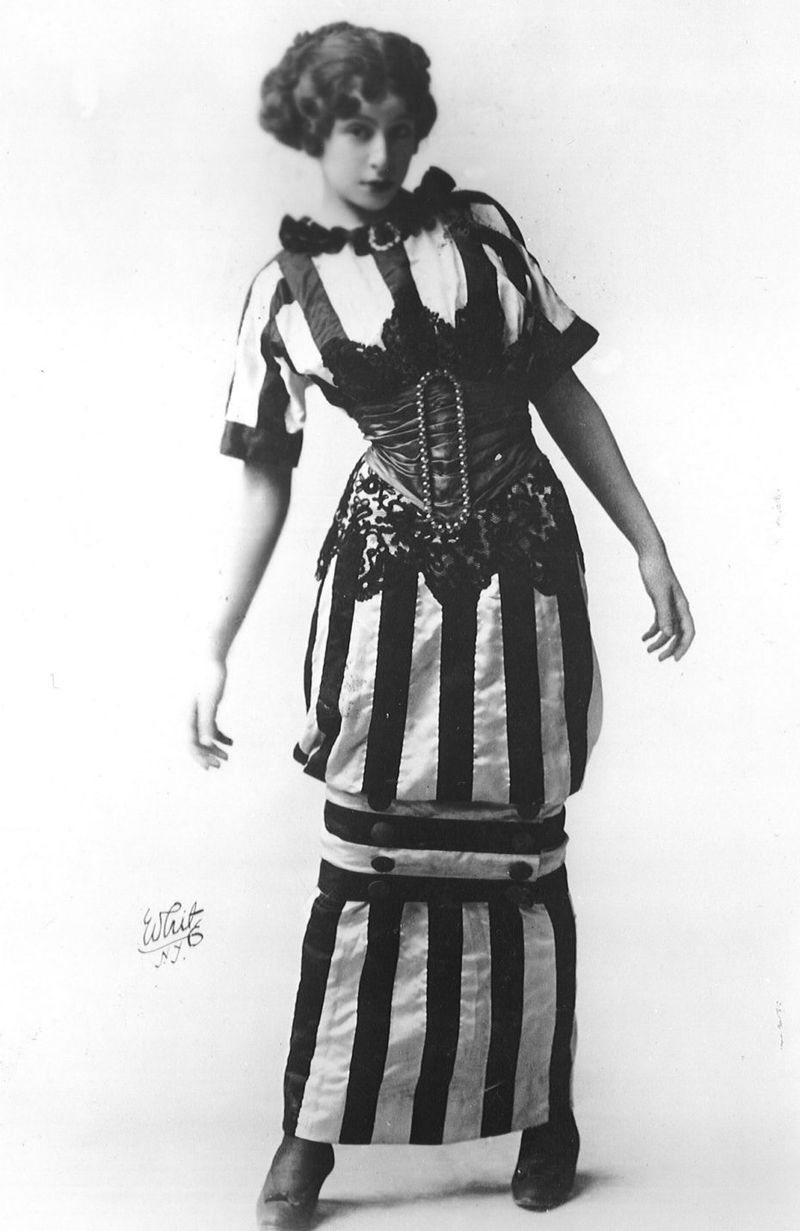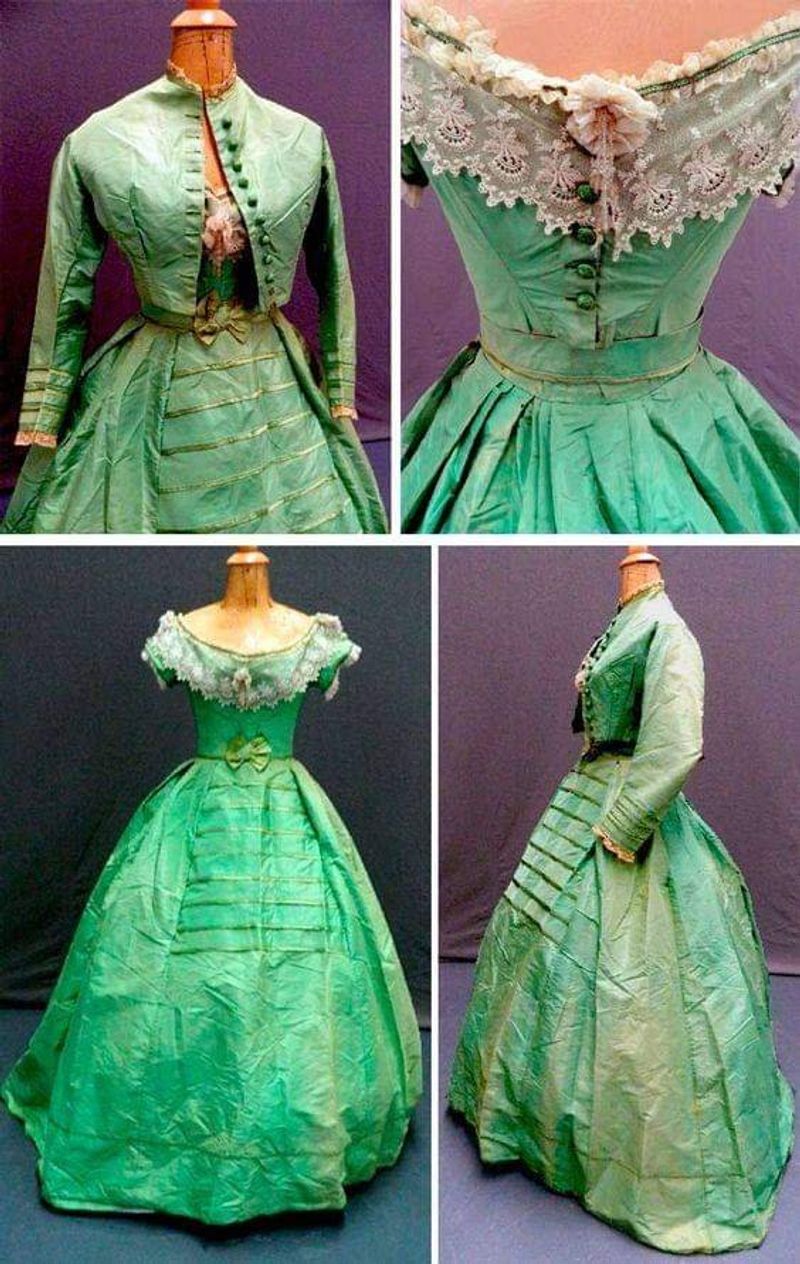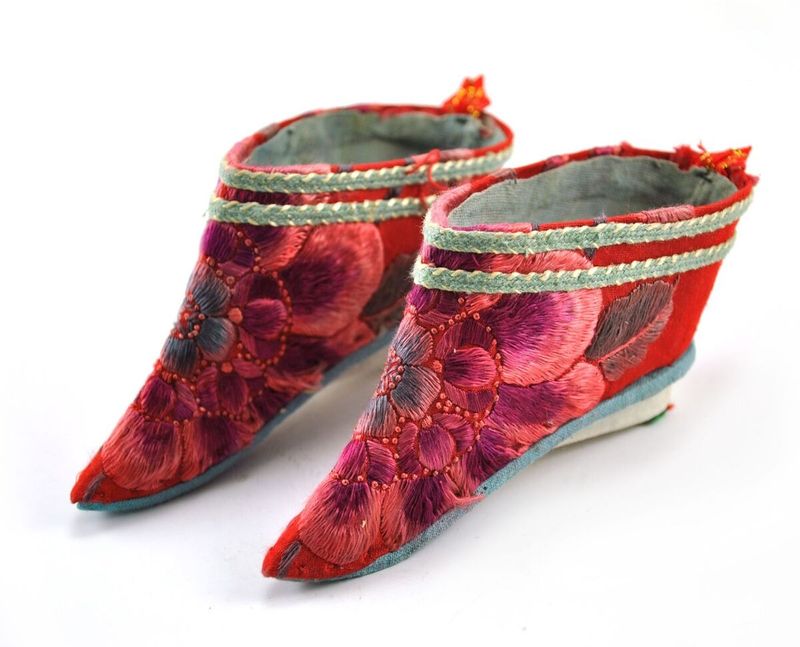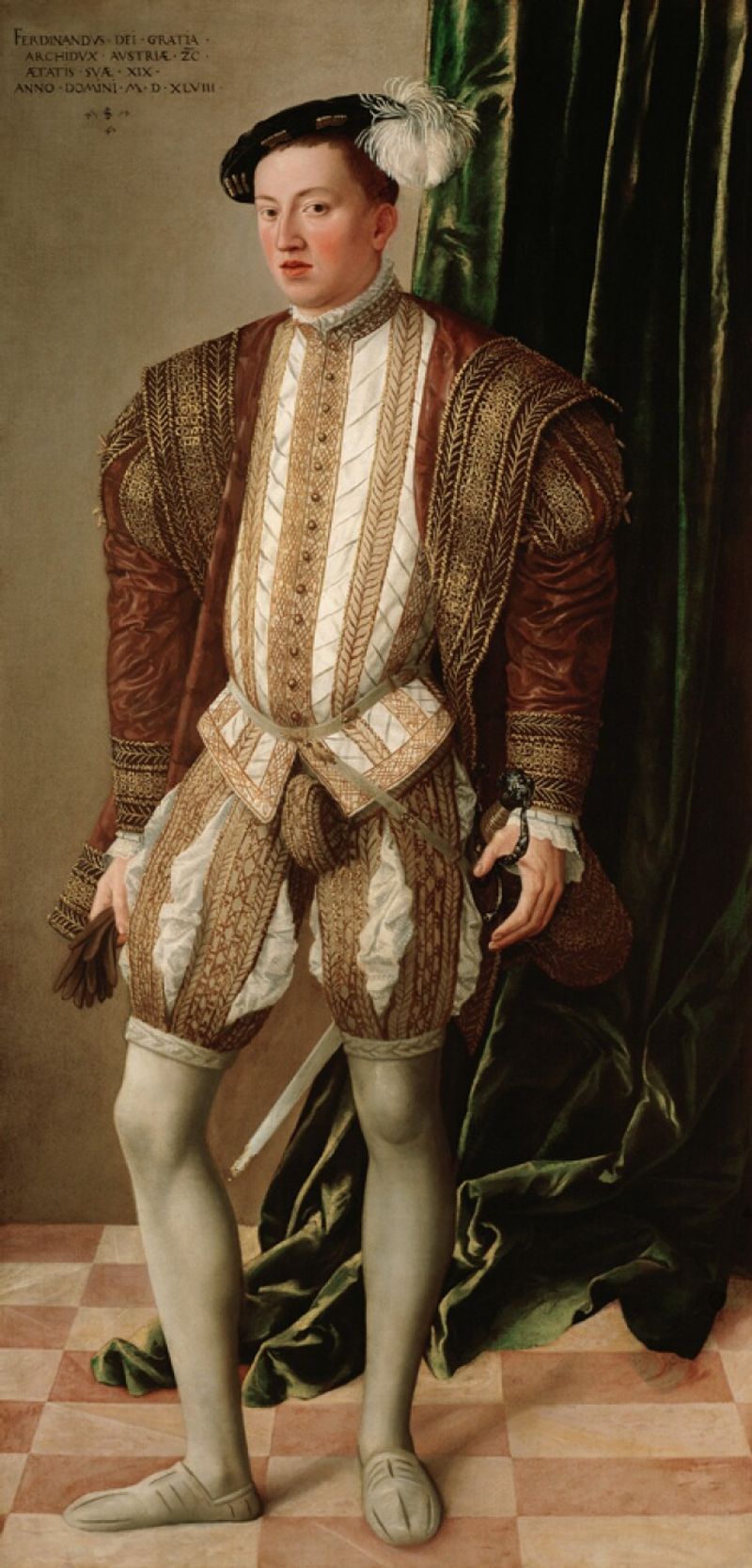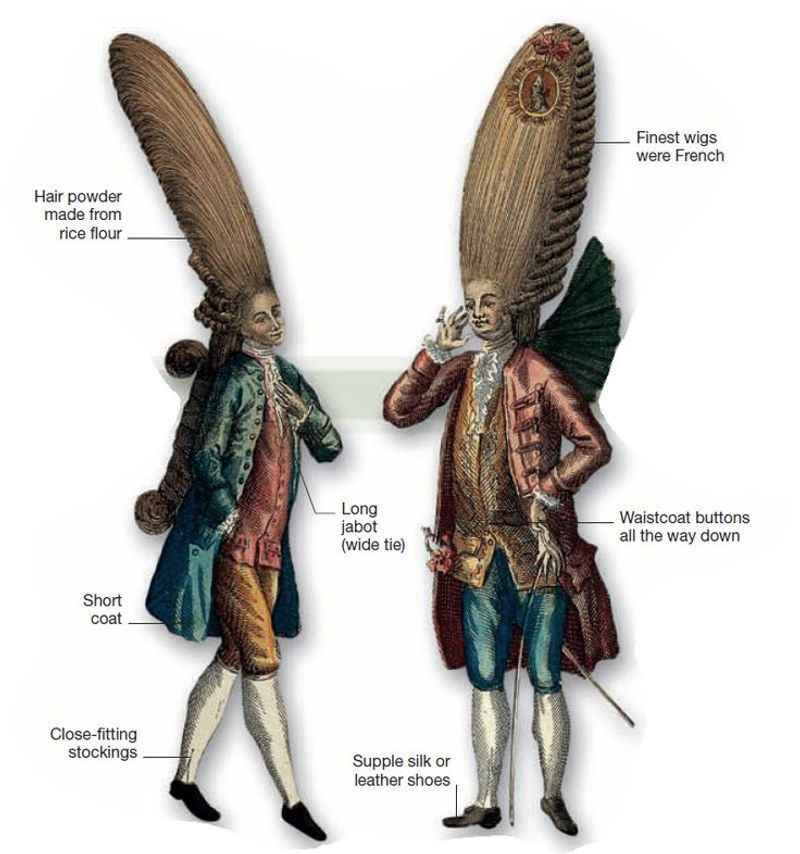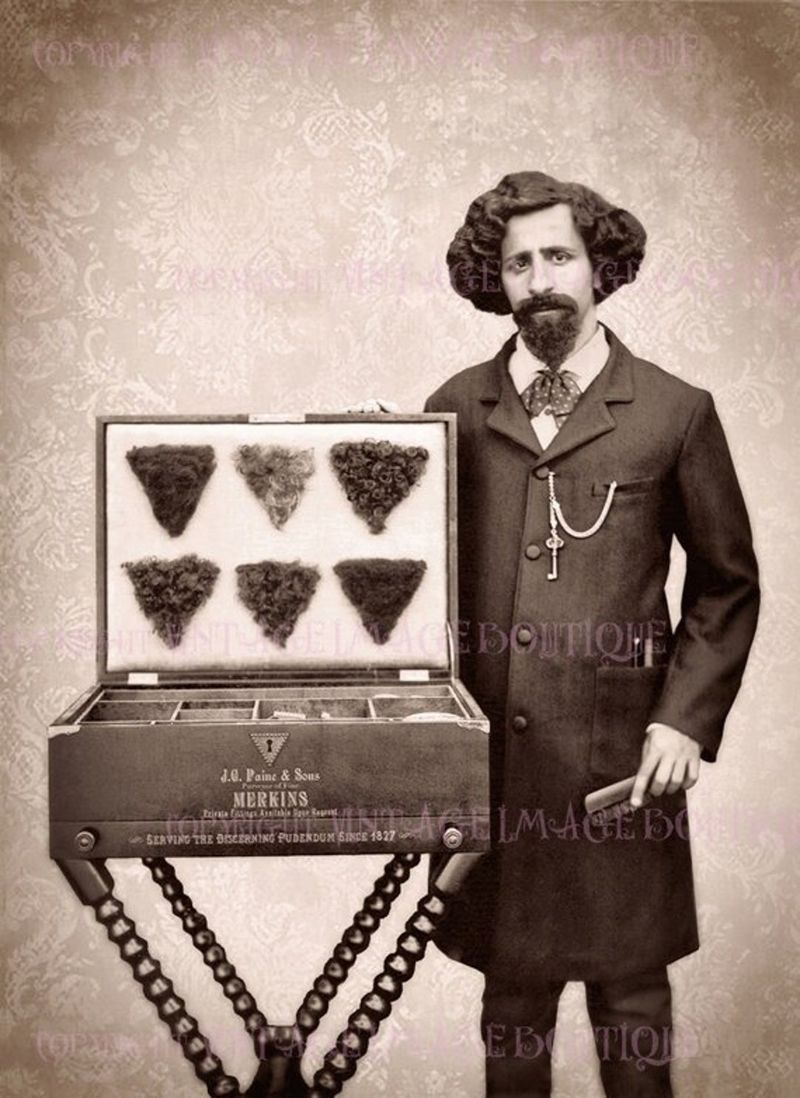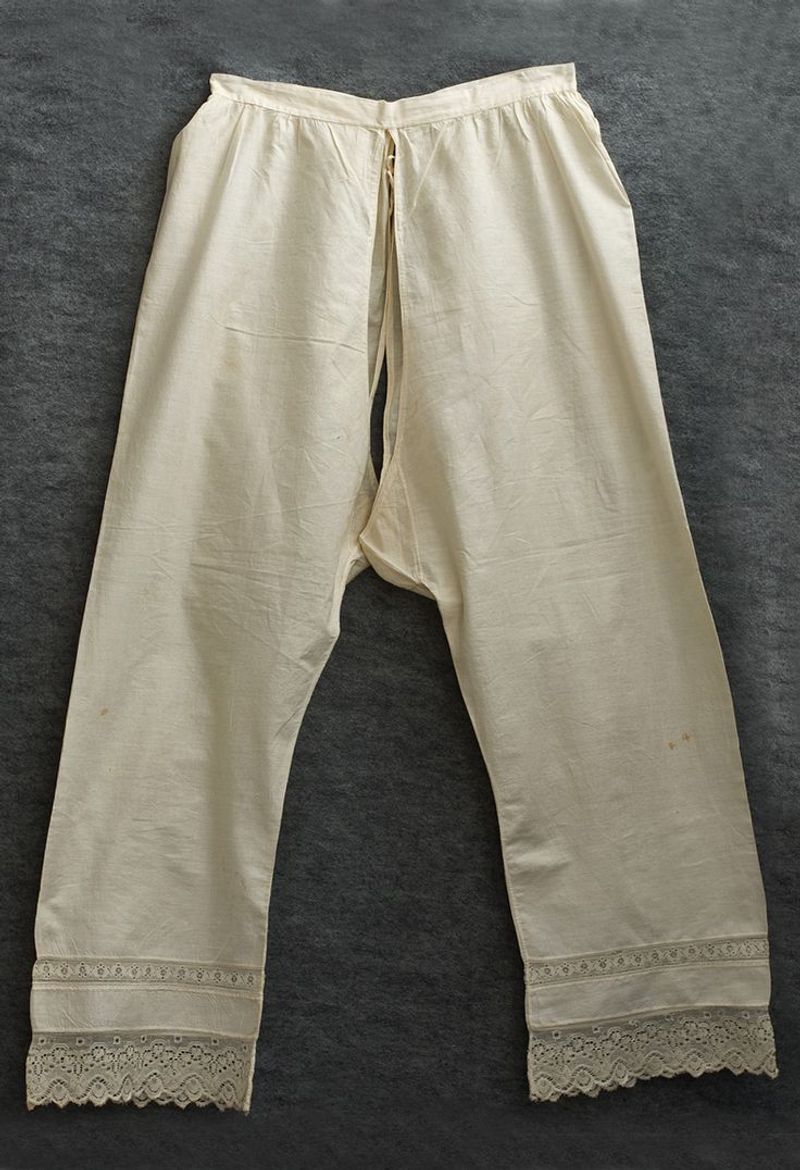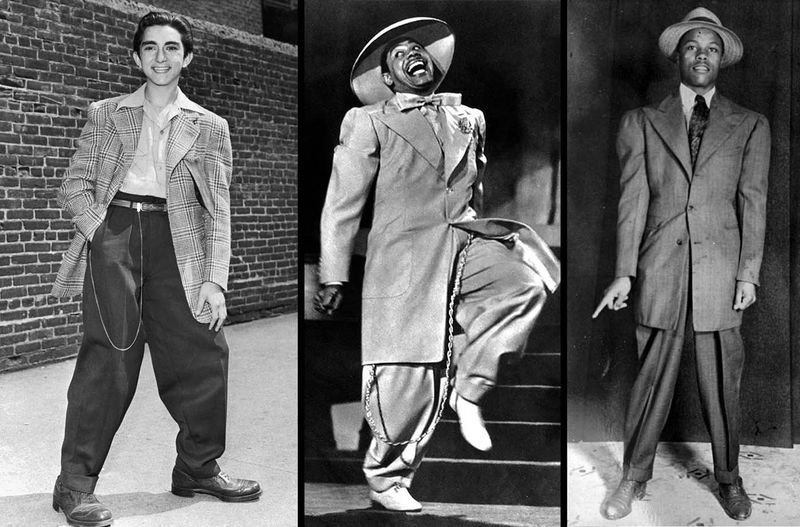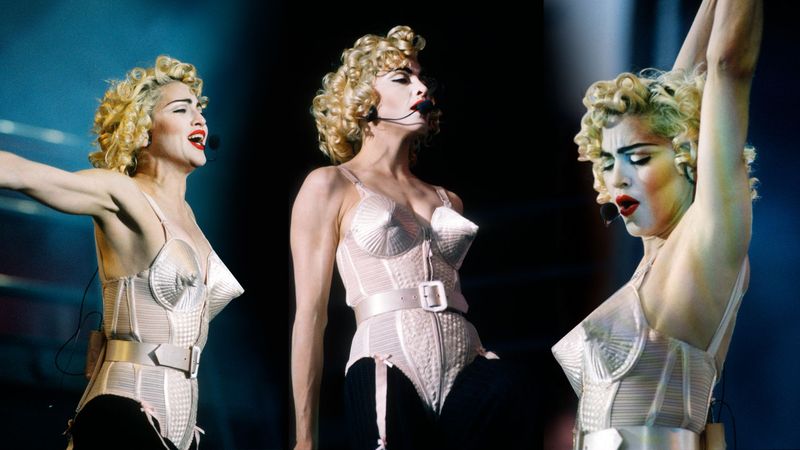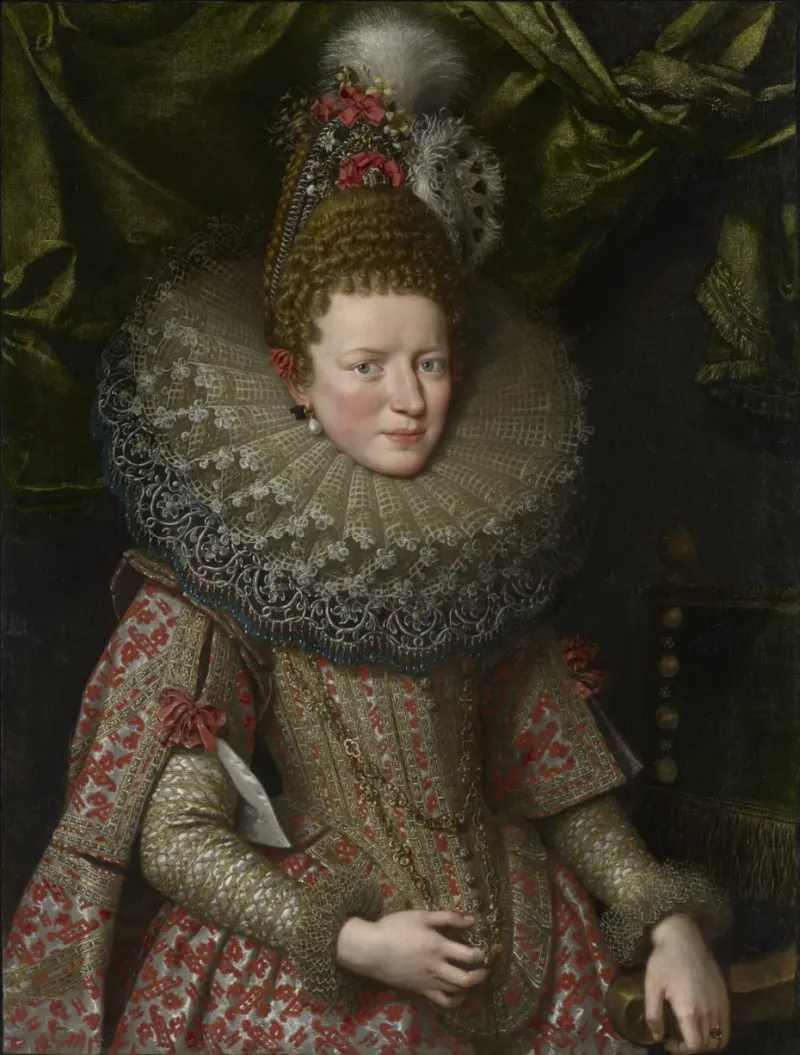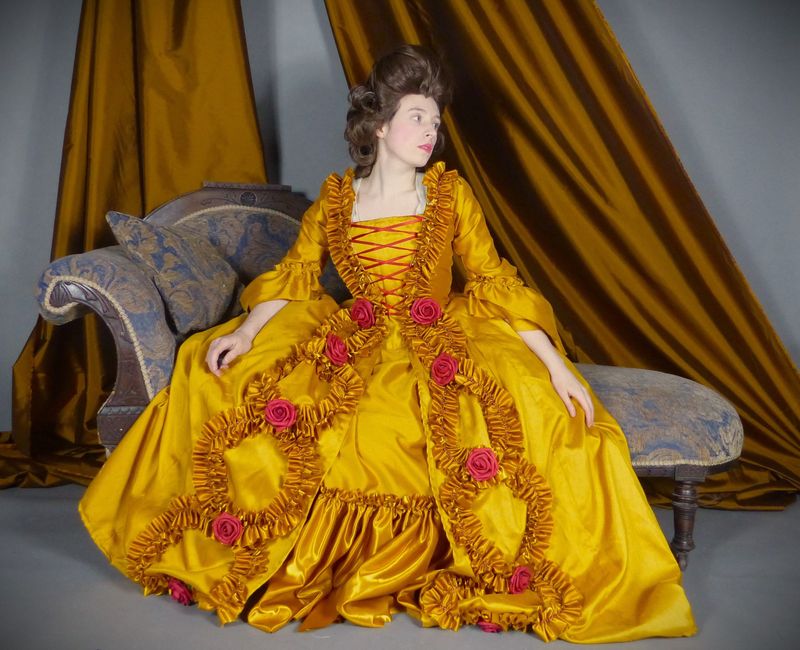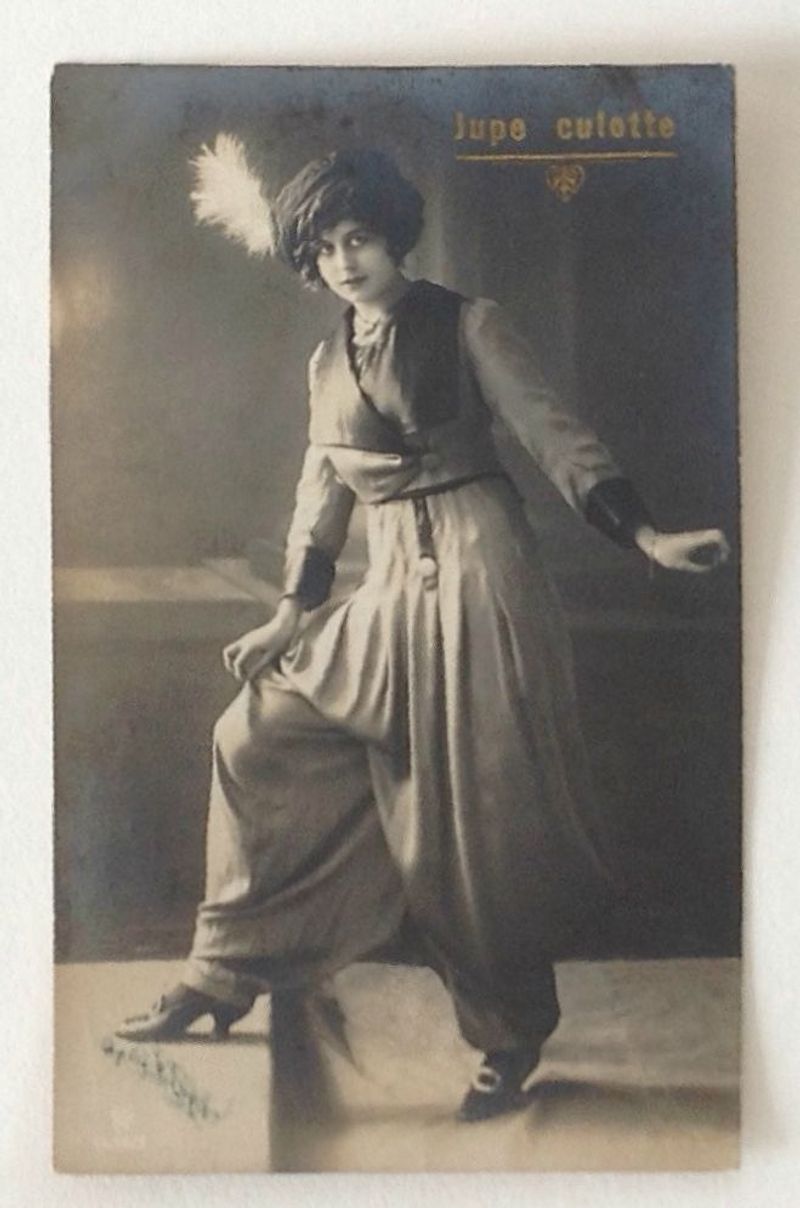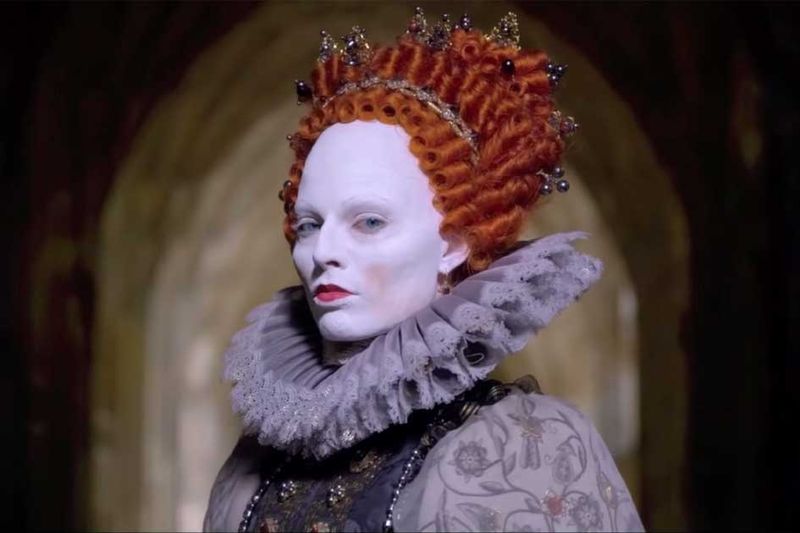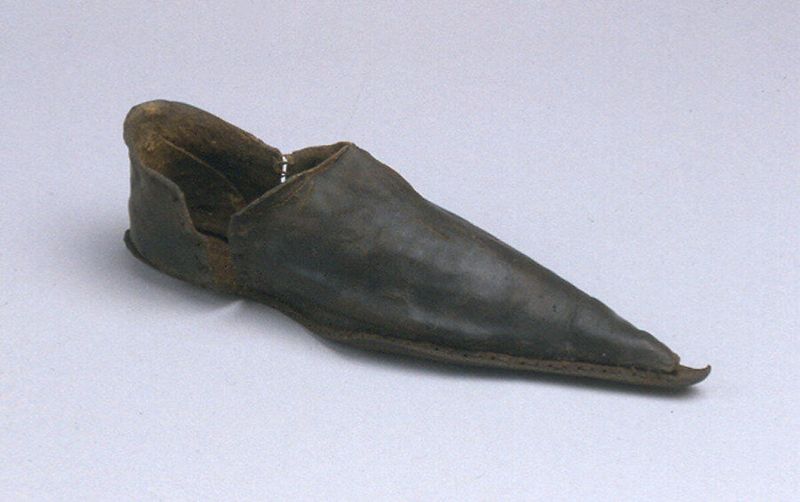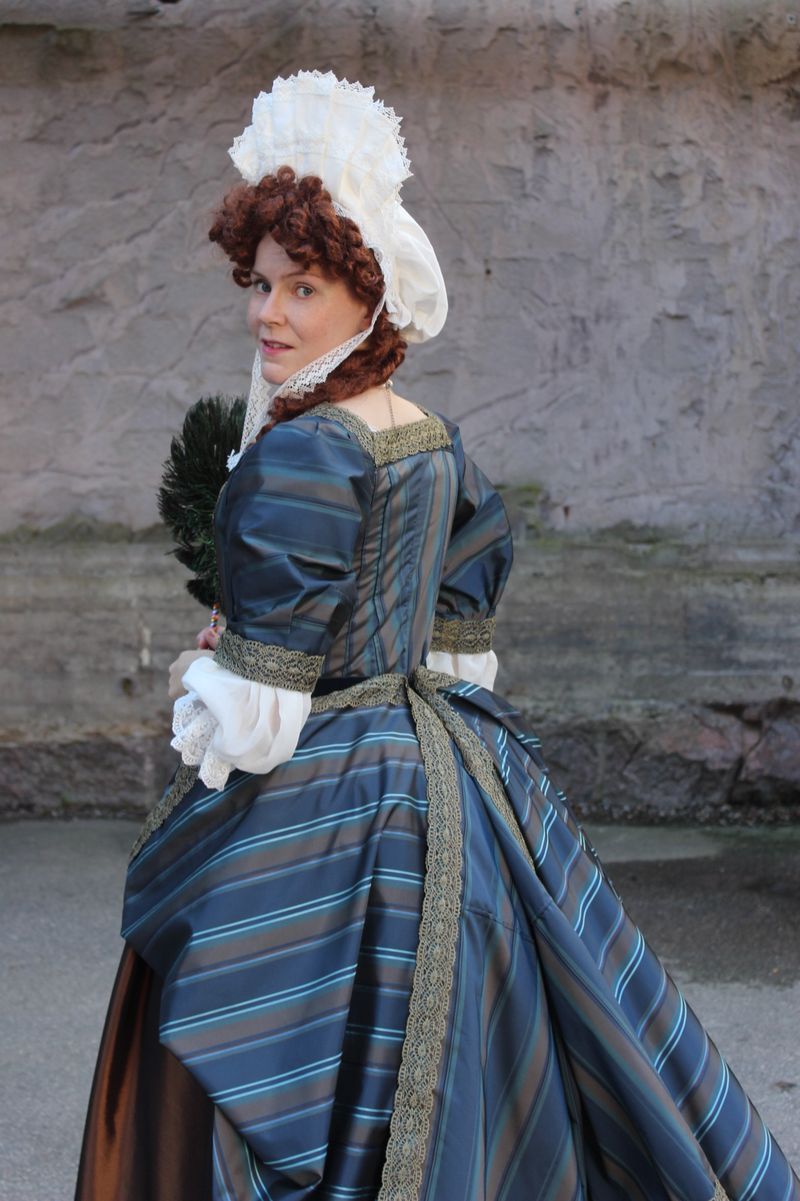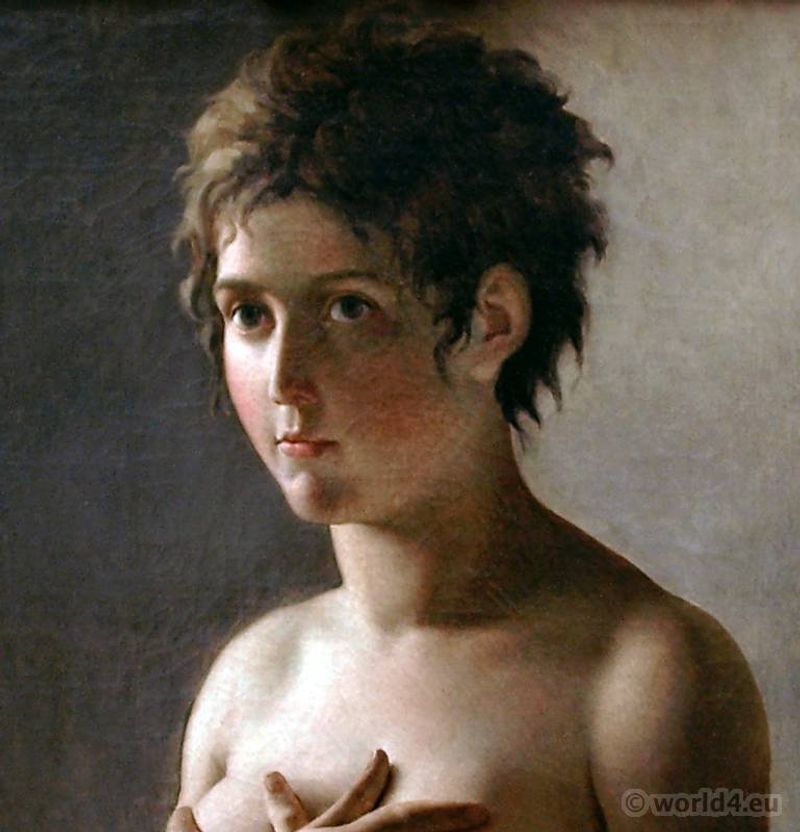Fashion has always been a form of self-expression, with trends that come and go, often leaving us puzzled. Some past fashion trends were so bizarre that they left an indelible mark on history. From towering shoes to peculiar wigs, here are 20 fashion statements that make us wonder, “What were they thinking?”
1. Chopines (16th-Century Platform Shoes)
In the 16th century, Venetian women embraced chopines, sky-high platform shoes that screamed opulence. These wooden stilts, reaching up to 20 inches, weren’t just a fashion statement; they symbolized wealth and status. Imagine teetering down cobblestone streets, reliant on servants to prevent a fall. The impracticality was part of the allure, proving one could afford such extravagance. While they kept dresses out of the mud, the wobbling motion made wearers resemble newborn giraffes. Chopines were less about comfort and more about showing off luxury, often leaving observers both awed and amused.
2. Powdered Wigs (18th Century)
In the 18th century, powdered wigs became synonymous with elegance and sophistication. These towering white creations, made from horsehair or human hair, were not just decorative; they served a practical purpose. Concealing hair loss due to syphilis or lice, wigs were often left unwashed for years, becoming veritable habitats for pests. Despite their unsanitary nature, powdered wigs became a staple of aristocratic fashion, with their grandeur overshadowing the grim reality beneath. The more elaborate the wig, the higher one’s social standing, making them a peculiar yet powerful symbol of status.
3. Crinolines (1850s Death Traps)
Crinolines of the 1850s were the epitome of Victorian fashion, creating silhouettes that seemed to float. These massive hoop skirts were more than just a fashion statement; they were status symbols. However, their impracticality was notorious. Women constantly found themselves stuck in doorways and unable to sit comfortably. Worse, the flammable materials posed a deadly risk, with tragic stories of skirts catching fire. Despite the dangers, crinolines remained popular, symbolizing elegance and femininity. They were both a marvel and a menace, capturing the contradictions of a bygone era.
4. The Hobble Skirt (1910s Ankle Shackles)
The hobble skirt of the 1910s was fashion’s peculiar attempt to blend elegance with restriction. These skirts, tight at the ankles, forced women to shuffle with minuscule steps, resembling graceful penguins. Designed to accentuate a woman’s figure, the hobble skirt was both admired and criticized. Though it provided a sleek silhouette, the skirt’s restrictions made movement a challenge, often resulting in falls and mishaps. Despite its impracticality, the hobble skirt was seen as a daring fashion choice, a testament to the lengths women would go for style during that era.
5. Arsenic Dresses (Victorian Poison Fashion)
Arsenic dresses in Victorian times were a lethal blend of beauty and peril. These vibrant green gowns, dyed with toxic arsenic, were the height of fashion, despite their deadly composition. The allure of the vivid hue overshadowed the health risks, with wearers often falling ill. For dressmakers, the danger was even greater, with exposure leading to severe health issues or death. Yet, the fashion persisted, epitomizing the era’s obsession with appearance over safety. Arsenic dresses remain a haunting reminder of fashion’s darker side, where style came at a grave cost.
6. Lotus Shoes (Foot-Binding Slippers)
Lotus shoes, emblematic of China’s foot-binding tradition, were both a cultural symbol and a form of torture. These tiny slippers, often just 3-4 inches long, were designed for feet broken and bound from a young age. Considered the pinnacle of beauty, foot binding stunted growth and caused lifelong pain. Despite the agony, bound feet were seen as a status symbol, with women enduring the practice for over a thousand years. Lotus shoes, with their intricate designs, masked the harsh reality beneath, reflecting a complex interplay of tradition, beauty, and suffering.
7. Codpieces (Renaissance… Bulge Enhancers)
The codpiece, a peculiar Renaissance fashion, was both a statement of masculinity and an object of intrigue. These padded and embellished crotch coverings were designed to enhance the male figure, showcasing virility and status. Popularized by men like Henry VIII, codpieces became increasingly elaborate, often adorned with jewels and embroidery. While their primary function was to cover and protect, they soon morphed into symbols of bravado. The codpiece reflected the era’s fascination with appearance and power, leaving a lasting impression as one of history’s most audacious fashion trends.
8. Macaroni Fashion (1770s Over-the-Top Dandies)
Macaroni fashion of the 1770s was the epitome of extravagance, where gentlemen donned towering wigs, tiny hats, and lavishly adorned garments. This flamboyant style was a way to flaunt wealth and sophistication, often pushing fashion to absurd extremes. The term “macaroni” itself denoted anything overly fashionable and was even immortalized in the song “Yankee Doodle.” Despite its comical appearance, macaroni fashion was a serious statement of taste and refinement. It served as a colorful chapter in fashion history, where excess and elegance danced hand in hand.
9. Bloomers (1850s “Scandalous” Pants)
Bloomers in the 1850s sparked both admiration and outrage, as women embraced these puffy trousers for comfort and practicality. Worn under shorter skirts, bloomers were a radical departure from restrictive dresses, symbolizing early feminist ideals. The freedom they offered was revolutionary, enabling women to engage in activities like cycling. However, bloomers shocked many, challenging traditional notions of femininity and modesty. Despite the controversy, they paved the way for modern women’s fashion, highlighting the ongoing struggle for equality in style. Bloomers remain a testament to the courage to challenge norms.
10. The Merkin (18th-Century Pubic Wig)
The merkin, an eccentric 18th-century accessory, served a peculiar purpose as a pubic wig. Crafted from materials like horsehair, it was used to cover syphilis sores or for modesty in nude art. The merkin’s existence highlights the era’s complex relationship with health and aesthetics, where appearances often masked unpleasant realities. Despite its oddity, the merkin became a discreet yet essential part of some wardrobes, reflecting the lengths to which people would go to maintain societal standards. It remains an intriguing footnote in fashion history, blending practicality with curious modesty.
11. Pantalettes (1830s Fake Modesty Underwear)
Pantalettes in the 1830s were the embodiment of Victorian modesty, yet they came with a twist. These frilly, lace-trimmed undergarments featured an open-crotch design, providing easy bathroom access while maintaining decorum. Seen as a necessary layer of decency, pantalettes were a curious blend of prudence and practicality. They highlighted the contradictions of the era, where appearances were everything, yet functionality couldn’t be ignored. Wearing pantalettes became a norm for women, reinforcing societal expectations while offering a glimpse into the complexities of Victorian fashion.
12. The Zoot Suit (1940s Fabric Overload)
The zoot suit of the 1940s was more than just clothing; it was a cultural statement. With exaggerated features like 28-inch-wide shoulders and baggy trousers, it defied wartime fabric rationing rules. The suit symbolized rebellion and identity, especially among young African American, Latino, and Italian communities. Despite being banned during WWII for excessive fabric use, the zoot suit persisted as an emblem of defiance and pride. Its bold style and political undertones left a significant mark on fashion history, illustrating the power of clothing as a form of protest and self-expression.
13. The Cone Bra (Medieval to Madonna)
The cone bra, with its pointy design, has roots in both medieval armor and modern pop culture. This unusual undergarment reemerged in the 20th century, gaining iconic status when worn by stars like Madonna. The distinctive silhouette made a bold statement, blending futuristic appeal with a touch of nostalgia. While often seen as uncomfortable, the cone bra challenged conventional beauty standards, promoting a strong, assertive femininity. Its fusion of past and present continues to intrigue, making it a fascinating study in the evolution of women’s fashion and empowerment.
14. The Ruff (Elizabethan Neck Torture)
The ruff, an iconic Elizabethan accessory, was both a fashion marvel and a nuisance. These giant, stiff lace collars framed the face dramatically but made simple tasks like eating a challenge. As a status symbol, the ruff’s size and complexity often indicated one’s wealth and social standing. The elaborate designs required skillful craftsmanship, turning the ruff into a wearable work of art. Despite its impracticality, the ruff became a staple of Elizabethan fashion, embodying the era’s love for spectacle and elegance while reflecting the social hierarchies of the time.
15. The “Sack Back” Gown (1700s Fake Hump Dress)
The “Sack Back” gown of the 1700s was a peculiar fashion choice, creating an illusion of a humped back. These dresses featured loose, flowing fabric that fell from the shoulders, offering a blend of comfort and grandeur. While the origin of this style is uncertain, it became a symbol of elegance in French fashion, allowing for freedom of movement. The gown’s unusual silhouette challenged conventional beauty norms, reflecting the period’s playful exploration of shape and form. Despite its odd appearance, the “Sack Back” gown remains a testament to the creativity of historical fashion.
16. The Harem Pants Scare (1910s “Moral Panic”)
Harem pants in the 1910s caused quite a stir, sparking debates over decency and style. Inspired by Middle Eastern fashion, these baggy trousers offered freedom and comfort, but were deemed scandalous by some. Critics argued they defied traditional Western dress codes, leading to moral panic. Yet, the appeal of harem pants persisted, eventually becoming a staple in modern wardrobes, particularly in the realm of leisure and exercise. Their journey from controversy to acceptance highlights the evolving nature of fashion, challenging norms and embracing diversity.
17. The “Dead White” Makeup Trend (1500s Poison Face)
The “Dead White” makeup trend of the 1500s was a deadly pursuit of beauty. Using lead-based cosmetics, women achieved a ghostly pale complexion, considered the height of elegance. However, the consequences were dire, with prolonged use leading to skin damage, hair loss, and even death. Despite the risks, the allure of this pallid look persisted, symbolizing wealth and purity. The trend serves as a cautionary tale of the lengths people will go for fashion, where the pursuit of beauty often comes at a high, sometimes fatal, cost.
18. The “Poulaine” (Medieval Long-Toe Shoes)
Poulaines, the long-toed shoes of medieval Europe, were a fashion statement that combined whimsy and impracticality. With pointed toes extending up to two feet, these shoes were both a symbol of status and a cause of frequent tripping. The extreme length often required wearers to chain the tips to their knees, adding to the absurdity. Despite their impractical nature, poulaines captivated fashion enthusiasts, becoming a distinctive feature of medieval attire. Their exaggerated design offers a glimpse into a time when style often trumped functionality, reflecting the quirky side of fashion history.
19. The “Mantua” (1690s Ultra-Wide Hips)
The mantua of the late 17th century was a fashion marvel, with side panniers that widened the hips to dramatic proportions. This style created silhouettes that were as impressive as they were impractical, often wider than doorways. The mantua symbolized wealth and social status, with its elaborate design requiring vast amounts of fabric and intricate tailoring. Despite its cumbersome nature, the dress became a popular choice among the elite, reflecting the era’s fascination with grandeur and elegance. The mantua remains a striking example of fashion’s ability to transform and astonish.
20. The “Titus” Haircut (French Revolution Revenge Cut)
The “Titus” haircut emerged during the French Revolution, symbolizing rebellion and change. This short, choppy style, often dipped in grease, mocked the elaborate wigs of the aristocracy. Named after a Roman emperor, the haircut was both practical and political, reflecting the revolutionary spirit. While it offered a lice-friendly environment, the “Titus” cut was a bold declaration of egalitarian ideals, breaking away from the excesses of the past. Its simplicity and defiance captured the mood of the era, marking a shift in both fashion and societal norms.
